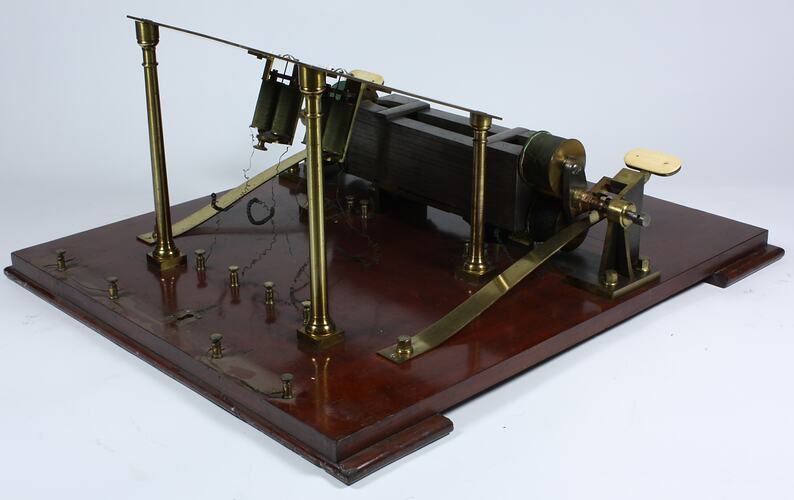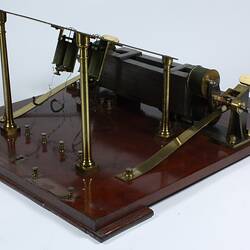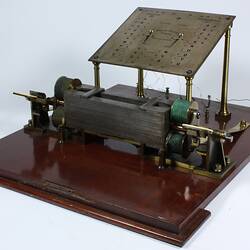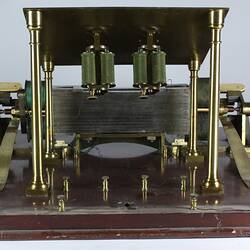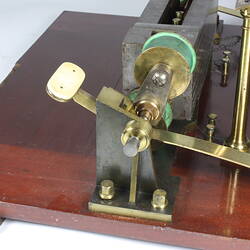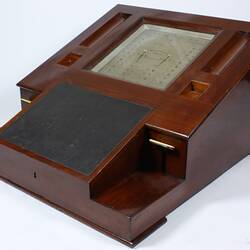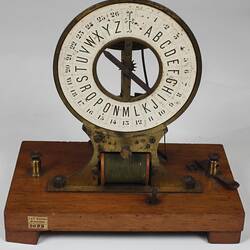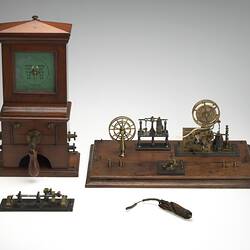Summary
Double-needle magneto-electric telegraph instrument patented in 1848 and manufactured by Messrs Henley and Forster in England.
This instrument is an example of a double-needle telegraph system which did not require any source of electrical power such as a battery. The system was not widely used but was in operation on the Adelaide-Semaphore line in South Australia in the 1850s before being superseded by morse instruments.
The instrument had a large square dial on the sloping top of a wooden case, with two needles pivoted side by side on the dial. Pressing either of two levers, one on each side of the case, rotated a coil between the poles of a magnet and generated a pulse of electric current which was transmitted along the telegraph line to the receiving instrument. There the pulse caused a deflection of one of the needles on the dial. The pattern of needle deflections indicated to the operator which letter of the alphabet was being received.
Physical Description
Wooden case with sloping top carrying a square dial. Two needles mounted side by side on dial. Dial marked with letters of the alphabet and corresponding needle deflection sequences. Two levers with paddle handles projecting from front of case, below front edge of sloping top. One lever on each side of instrument.
More Information
-
Collection Names
-
Collecting Areas
-
Acquisition Information
Donation from (Estate of) Mr John J. Thompson, 27 Apr 1915
-
Manufacturer
-
Patentee
Mr William T. Henley, London, England, Great Britain, 1848
In 1848, W.T. Henley took out a patent for their double needle telegraph. -
Collector
Mr John J. Thompson, 12 Rose Street, Armadale, Greater Melbourne, Victoria, Australia, 27 Apr 1915
-
Inscriptions
In centre of square dial: "Magnetic Telegraph Company HENLEY'S PATENT"
-
Classification
-
Category
-
Discipline
-
Type of item
-
Overall Dimensions
660 mm (Length), 575 mm (Width), 350 mm (Height)
-
References
[Link 1] - accessed 3 December 2008
-
Keywords
